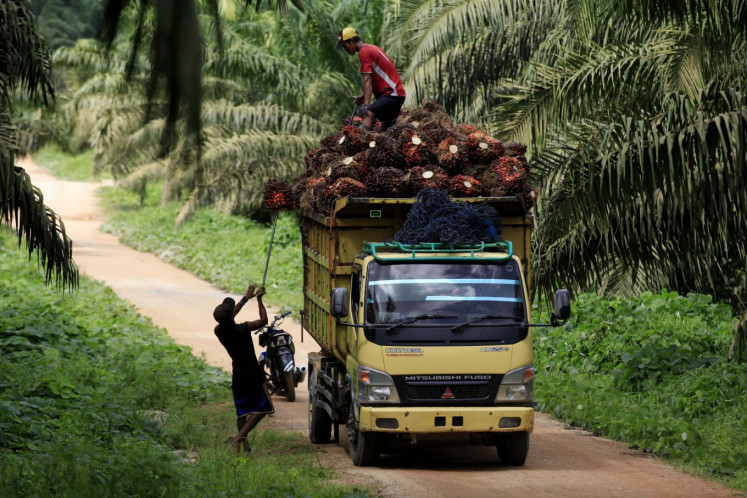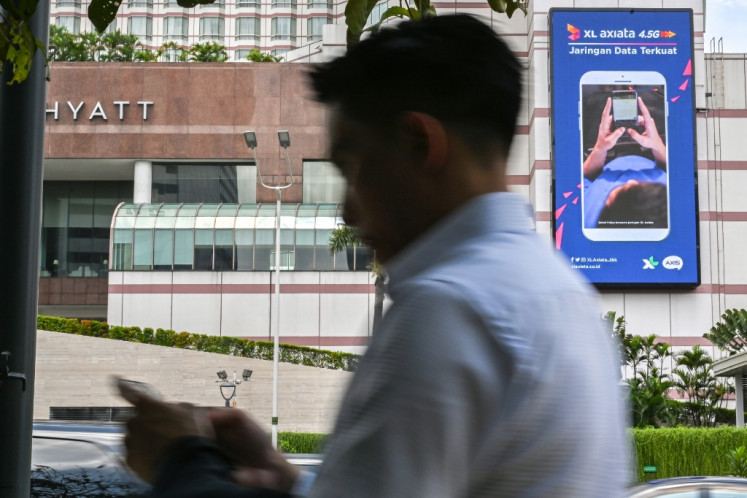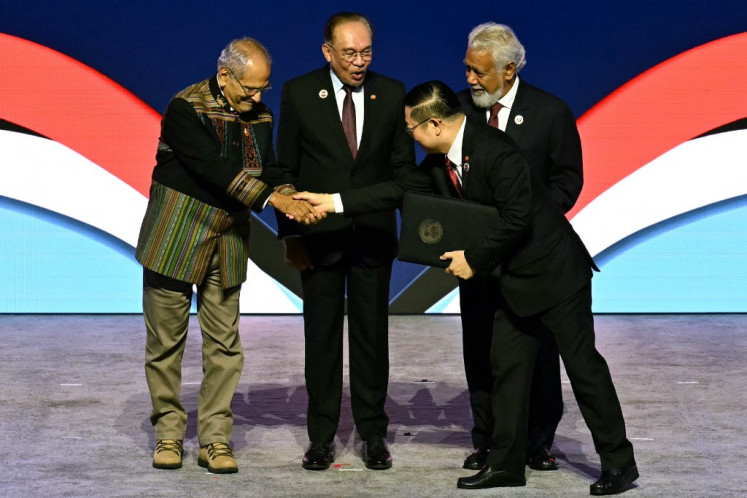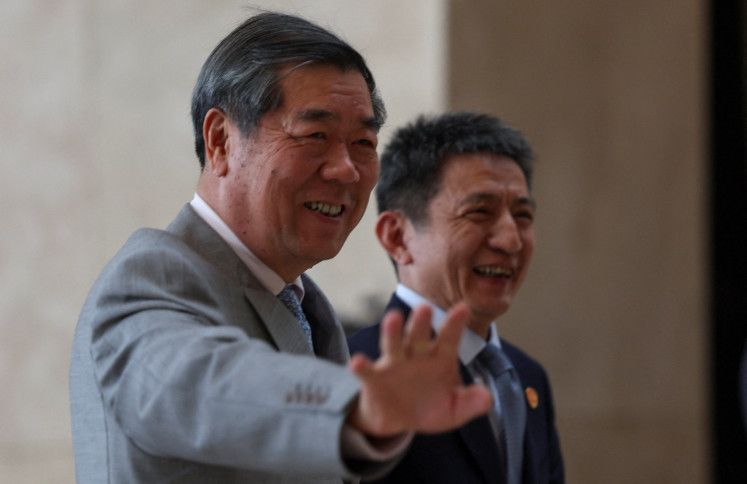Popular Reads
Top Results
Can't find what you're looking for?
View all search resultsPopular Reads
Top Results
Can't find what you're looking for?
View all search resultsThe charm of Indonesia's traditional fabrics
As home to thousands of ethnic subgroups, Indonesia boasts a vast range of traditional fabrics, each with unique patterns and colors
Change text size
Gift Premium Articles
to Anyone
A
s home to thousands of ethnic subgroups, Indonesia boasts a vast range of traditional fabrics, each with unique patterns and colors.
A selection of these fabrics were recently showcased in a fashion show titled Seribu Warna Kain Nusantara (The Thousand Colors of Indonesian Fabrics) by Rumah Pesona Kain, an association that specializes in materials.
The fabrics on display - from 12 areas in total - were grouped according to their origins, with sections specifically on eastern Indonesia, Java and the western part of the country.
The show presented work from 13 Indonesian designers, each of whom used specific materials to make modern and traditional dresses.
Thomas Sigar paired Aceh's famous songket (traditionally woven fabric) - which comes in traditional long fabrics or trousers -with tunic shirts. Sofie, another Achenese designer, made asymmetric dresses with floral embellishments using the traditional fabric.
Carmanita, from Jambi, paired traditional batik from the region with layered shirts, while Ari Seputra designed shoulder dresses and boleros made from local songket. She used songket from both Jambi and Riau.
The next section featured various Javanese batik designs from areas less commonly visited, such as Sidoarjo and Garut.
Chossy Latu, who worked with Sidoarjo batik, combined traditional fabrics with modern kebaya (traditional female attire), matching the bright colors depicted in the batik designs. Fellow designer Barli Asmara also transformed traditional batik into evening dresses.
Ghea Panggabean presented Banten batik with a simbut pattern in ethnic bohemian designs, while Deden Siswanto turned Kudus batik into padded shirts.
Designs for Semarang batik were adopted by Stephanus Hamy, who layers coastal patterns like buketan (bouquet) and pagi-sore (morning-evening) on kimono-style shirts, vests and stoles.
Tuty Cholid worked with Rangrang silk from Nusa Penida, weaving a soft, light and modern outfit. The silhouettes in Tuty's design are inspired by kaftans and are dominated by pleats.
While traditional Rangrang weaving is dominated by solid colors, Tuty chose grey chromes paired with purple, olive green, light orange and dark blue.
Itang Yunasz used Bugis songket for his Islamic dress designs, modifying what are normally short-sleeved Bodo shirts into long sleeved ones. Denny Wirawan used East Nusa Tenggara weaving on jackets and shirts, and paired them with jodhpur pants.
Oscar Lawalata presented Geringsing silk-weaving skills from Tenganan village, Bali. While switching the weaving thread with a smoother material, Oscar retained the traditional patterns such as Lubeng (scorpion), Cemplong (large flower superimposed on a smaller one) and Cempaka (a species of frangipani).
"As a designer, we need to show that traditional fabrics can be used for modern dresses. We provide modern touches, such as new machines and materials, without eliminating traditional aspects," Oscar said.
Ike Nirwan Bakrie, one of the association's founders, said the decision to feature the fabrics in an exhibit meant the craftsmen's ability came into question, as they only had three months to produce their pieces.
As batik craftsmen work in different conditions, the foundation helps them in various ways, Ike said.
"If their productivity is high, we focus on the marketing and the fabric development. If they have low productivity, we help them by, for example, bringing textile experts to them," she said.
Established in September 2005, Rumah Pesona Kain has now fostered 31 traditional fabric communities across the country.










